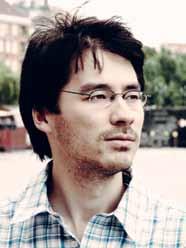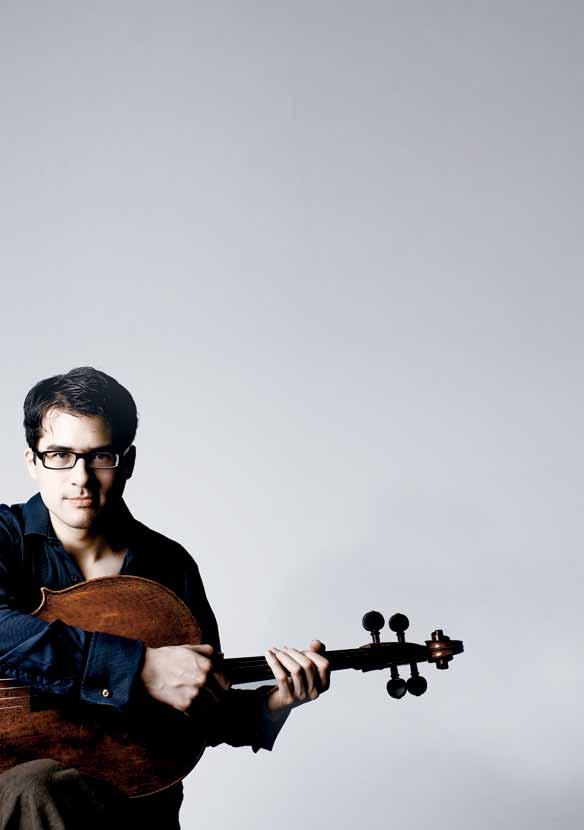

歡迎蒞臨第40 屆香港藝術節。
作為重要的國際
文化盛會,香港
藝術節每年呈獻 世界頂尖及多元 化的表演節目。
今年榮幸再邀請
到世界各地及本
港藝術精英,帶
來舞蹈、音樂、
歌劇及戲劇等精采表演,讓觀眾可欣 賞振奮心靈的繽紛藝饌。
我藉此感謝香港特區政府、香港賽馬
會、各贊助企業及個人的慷慨資助。
踏入第40周年,香港藝術節除了雲
集世界各地的藝術界翹楚,帶來精采
演出,亦透過學生票贊助計劃及「青
少年之友」計劃,培養年青人的藝術
體驗;此舉有賴一群熱愛藝術的有心 人慷慨資助,鼓勵年青人參與藝術節
的精采演出,提升日後觀賞藝術的興 趣。
各位觀眾的支持和參與,乃驅動藝術
節向前邁進的力量。感謝您前來欣賞 本節目,希望本屆藝術節為您帶來美 好的觀賞時光。
I warmly welcome you to the 40th Hong Kong Arts Festival.
Recognised for the quality and variety of its programming, the annual Hong Kong Arts Festival is keenly anticipated as the premier event in Hong Kong’s cultural calendar. This year we again welcome top international and local talent in dance, music, opera and theatre, whose artistry will delight and inspire us.
I wish to acknowledge strong support of the Government of Hong Kong SAR, the Hong Kong Jockey Club, and sponsors and donors who make this Festival possible. At this 40 year mark, I am particularly delighted that in addition to presenting wonderful artists to a discerning public, we can also nurture young audiences through our Student Ticket Scheme and Young Friends Scheme, thanks to the contributions of donors and supporters who generously share their own love for the arts with audiences of the future.
Thank you very much for coming to this performance. Your presence is paramount to the success of the Festival, and I wish you a very enjoyable experience.

歡迎閣下蒞臨第 40屆香港藝術 節。
今年香港藝術節 呈獻的藝術名家 及精采節目,就 如香港大都會一 樣多元化又璀璨 奪目。延續四十 年的優良傳統, 我們繼續邀請
本地及國際知名的星級藝術家點亮香 港大小舞台,呈現世界豐碩的文化傳 統,豐富未來的文化面貌。
衷心感謝多年來熱心支持香港藝術節 的各界人士及團體。我們過去的成 功源自他們對藝術的熱忱,他們亦深 信豐盛多元的文化藝術生活,是香港 作為名副其實的國際大都會之重要支 柱。
感謝您與我們一起慶祝香港藝術節的 四十年。藝術節團隊向每一位支持香 港藝術節的觀眾衷心致謝,期望您盡 享連串多姿多采的節目。
It is a pleasure and privilege to welcome you to the 40th Hong Kong Arts Festival.
The array of artistic talent and programmatic content presented at this year’s Festival is as diverse and multi-faceted as the city which has hosted this annual event in the course of four decades. As we add to the roll call of local and international luminaries who grace our stages, we continue to draw upon the impressive traditions available to us, and work to augment a heritage for the future.
I am deeply grateful to many individuals and institutions for their contributions to the Festival’s success over the years, informed by a love for the arts and an appreciation of how important it is for a major city worthy of that description to have a rich cultural life.
Thank you for being here to celebrate forty years of the Hong Kong Arts Festival. The Festival would not happen without its audience. The entire Festival team appreciates your contribution to the 40th Hong Kong Arts Festival and hopes that you enjoy many wonderful performances.
Charles Lee, Chairman
Tisa Ho, Executive Director
香港藝術節資助來自: The Hong Kong Arts Festival is made possible with the funding support of:

23 2 2012
馬丁‧史岱費爾德 鋼琴獨奏會
Martin Stadtfeld Piano Recital
節目資料 P9 for programme details
24-25.2.2012
巴維‧哈斯四重奏
Pavel Haas Quartet
節目資料 P21 & P33 for programme details
26 2 2012
石坂團十郎 大提琴獨奏會
鋼琴︰ 石坂清人
Danjulo Ishizaka Cello Recital with Kiyondo Ishizaka, Piano
節目資料 P43 for programme details
香港演藝學院香港賽馬會演藝劇院
The Hong Kong Jockey Club Amphitheatre, HKAPA
Cover photographs: Martin Stadtfeld © Uwe Arens, Danjulo Ishizaka, Pavel Haas Quartet © Marco Borggreve
敬請關掉所有響鬧及發光裝置,請勿擅自攝影、錄音或錄影,多謝合作。
Please switch off all sound-making and light-emitting devices. Unauthorised photography or recording of any kind is strictly prohibited. Thank you for your co-operation.
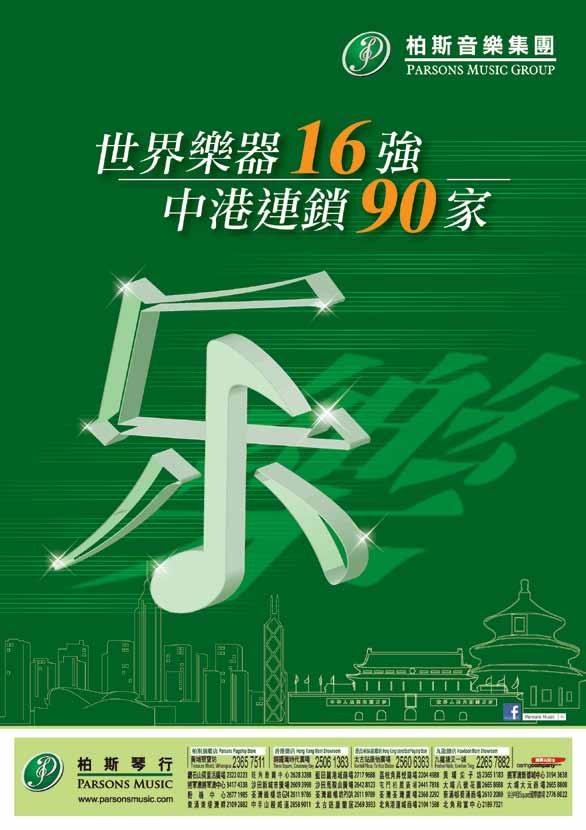
馬丁‧史岱費爾德 鋼琴獨奏會
Martin Stadtfeld Piano Recital
23.2.2012
巴赫 (1685-1750)
Johann Sebastian Bach
《平均律鍵盤曲集》第一部,BWV 846-869 The Well-Tempered Clavier Book I, BWV 846-869
演出長約1小時40分鐘,包括一節中場休息
Running time: approximately 1 hour and 40 minutes with one interval
馬丁•史岱費爾德 鋼琴
Martin Stadtfeld Pianist
史岱費爾德九歲便舉行個人獨奏會,13歲獲法蘭克福音樂高等學校取錄,師從納托錢 尼。2002 年,他奪得萊比錫巴赫國際鋼琴大賽冠軍,成為首位獲此殊榮的德國鋼琴 家。在他獲獎前,這項比賽的冠軍位置懸空了14年。這個獎項為他開啟了演奏之途,
他先後在安巴赫、斯圖加、柯森等重要的巴赫音樂節中演出,同時開始參與歐洲其他 著名的音樂節。
史岱費爾德到過世界各地的著名音樂中心演出,足跡踏遍歐洲、美國、日本。他在德
國各大城市、阿姆斯特丹皇家音樂廳、東京湡田川優勝中心廳、薩爾茲堡音樂節等地 舉行獨奏會,大受歡迎。他也跟各大樂團一同演出,合作過的樂團包括慕尼黑愛樂樂 團、倫敦皇家愛樂樂團、新日本愛樂樂團、薩爾茲堡合奏團、海牙王城樂團、薩爾茲 堡莫扎特管弦樂團及德勒斯登國立管弦樂團。
2003 年,史岱費爾德推出首張專輯,巴赫的《哥爾德堡變奏曲》,受到樂評熱烈稱 頌,並迅速登上德國古典音樂暢銷排行榜首。2004年10月,專輯為他贏得回聲古典大 獎「年度新銳音樂家獎」。2005 年秋天,史岱費爾德推出莫扎特第20 及第24 號鋼琴 協奏曲,參與錄製的是懷爾指揮的德國北部電台交響樂團;音樂媒體誇讚他的演繹機 靈且敏銳。2006年2月,他發行專輯《小品》,其中收錄了16首巴赫的前奏曲及舒曼 的《彩葉集》。隨後他又與費德勒指揮的瑞士琉森節日弦樂團合作錄製了三首巴赫的 鍵盤協奏曲,專輯於2006 年秋季發行。史岱費爾德憑這張專輯獲2007 年回聲古典大 獎「最佳協奏曲唱片獎」。他在接下來的專輯把注意力轉向舒伯特,錄製了兩首奏鳴 曲,分別為降B大調奏鳴曲D960和G大調奏鳴曲D984,唱片於2007年9月發行。次年 史岱費爾德憑此專輯獲回聲古典大獎「年度最佳獨奏(十九世紀)唱片獎」。
他的巴赫《平均律鍵盤曲集》第一部於多特蒙德音樂廳錄製,專輯在2008 年10 月發 行。他跟多特蒙德音樂廳合作多年,除了定期在音樂廳舉行獨奏會外,還致力於激發 頑皮學生對古典音樂的興趣。為此他常造訪學校,講解他自己作為鋼琴家的工作,同 時為學生演奏(尤其是巴赫的音樂),邀請他們參加他的音樂會。
中譯︰葛欣
Stadtfeld gave his debut recital at the age of nine, and was only 13 when he enrolled at the Musikhochschule Frankfurt to study with Lev Natochenny. He created a stir in 2002 when he became the first German pianist to win the International Bach Competition in Leipzig. First prize in this prestigious contest, which hadn’t been awarded for 14 years, opened the doors to the leading Bach festivals (Ansbach, Stuttgart, Köthen) for the young artist, as well as to other important music festivals.
Concert tours have since taken Stadtfeld to all the leading music centres in Europe, the US and Japan, and he has given solo recitals to full houses in major German cities, in the Concertgebouw Amsterdam, the Sumida Triphony Hall in Tokyo and at the Salzburg Festival. He has also played in orchestral concerts together with the Munich Philharmonic, London's Royal Philharmonic Orchestra, the New Japan Philharmonic Orchestra, Camerata Salzburg, the Residentie Orkest den Haag, the Salzburg Mozarteum Orchester and the Dresden Staatskapelle.
Stadtfeld’s debut CD with Bach’s Goldberg Variations was released in 2003 to effusive praise from the critics, and rapidly rose to first position in the German classical charts. In October 2004 he was awarded the Echo Klassik prize for this CD as Young Artist of the Year. In autumn 2005, Stadtfeld released Mozart’s piano concertos nos 20 & 24, recorded together with the North German Radio Symphony Orchestra under Bruno Weil, which the music press praised as an "interpretation at once totally alert and highly sensitive". February 2006 saw the release of the CD Kleine Stücke with 16 Bach preludes and Robert Schumann's Bunte Blätter. He then went on to record three keyboard concertos by Bach, with Achim Fiedler conducting the Festival Strings Lucerne. This CD was released in autumn 2006, and was awarded the Echo Klassik prize for the Best Concerto Recording in 2007. For his next CD, Stadtfeld turned his attention to Schubert, releasing the two sonatas D960 in B flat major and D984 in G major in September 2007. Echo Klassik once again honoured the new CD with an award as its Best Solo Recording (19th century) in 2008.
The recording of the first part of Bach's The Well-Tempered Clavier was made in the Dortmund Konzerthaus, and was released in October 2008. Stadtfeld has been working together with the Dortmund Konzerthaus for many years now. In addition to regular recitals there, he has tried to arouse interest in classical music among pupils from problem schools: he visits schools, talks to the children about his work as a pianist, presents music to them, especially music by Bach, and invites them to attend one of his concerts.
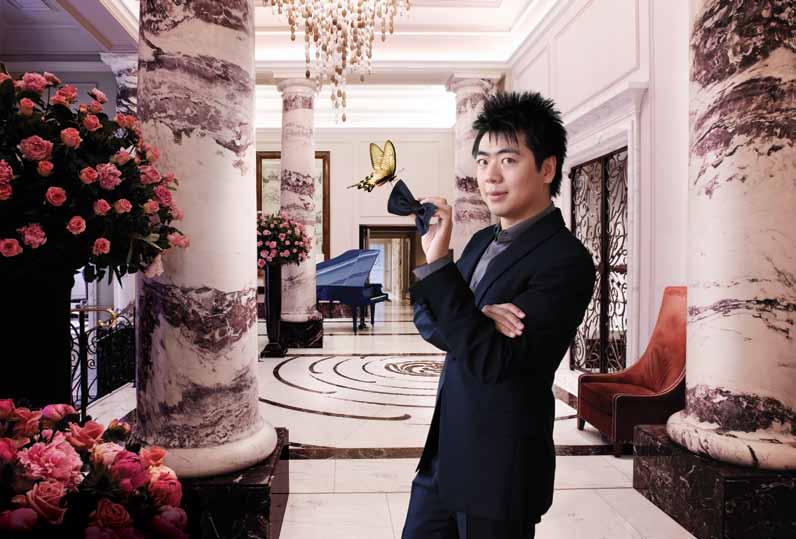
巴赫 Johann Sebastian Bach
《平均律鍵盤曲集》第一部,BWV 846-869
The Well-Tempered Clavier Book I, BWV 846-869
巴赫不單是偉大的作曲家,還是音樂 史上著名的老師。他的《平均律鍵 盤曲集》的成就超然,對後世的音樂 家來說,包括貝多芬、布拉姆斯、威 爾第、德布西、馬勒、荀白克,甚至 一眾爵士樂大師,都是學習的素材, 給予他們不少啟發。《平均律鍵盤曲 集》連同巴赫許多其他的鍵盤作品, 對無數業餘或職業鋼琴演奏者來說, 都是重要的訓練素材。
巴赫在《平均律鍵盤曲集》第一部的 標題頁上,註明作品是「為好學的青 年樂手作練習之用,也為熟悉此技巧
的人作消遣之用」。倘若我們想到這 部作品所含的無窮啟示,就知道這句 話是何等保守,除了演奏家和作曲家
外,《平均律鍵盤曲集》對音樂愛好 者來說也極具吸引力。
巴赫寫下很多聖樂,也有不少世俗音 樂作品如《平均律鍵盤曲集》。無 論創作何種類型的作品,他都把榮耀 上帝和受造物視為自己當藝術家的最 終目的。而《平均律鍵盤曲集》的奉 獻精神常被視為帶有宗教上的言外之 意:有種說法指《平均律鍵盤曲集》
是音樂家的舊約聖經,而貝多芬的 32 部鋼琴奏鳴曲則像新約聖經。大提
琴家卡薩爾斯曾在上世紀把無人問津
的巴赫無伴奏大提琴組曲重新展現人
Not only does J S Bach rank among the greatest of all composers: he is also one of the supreme teachers in the history of music. The influence of such achievements as The Well-Tempered Clavier (WTC) has been incalculable. It has served as a source from which generations of later composers — from the likes of Beethoven, Brahms, Verdi, Debussy, Mahler and Schoenberg to jazz masterminds — have learned many of the secrets of their art. And of course this and other keyboard collections by Bach have played a key role in the training of countless pianists, both amateurs and legendary performers.
Bach himself wrote on the title page of the first book of The Well-Tempered Clavier that it was intended “for the use and practice of young musicians who desire to learn, as well as for those who are already skilled in this study, by way of amusement”. What an understatement this seems to us, when we think of the inexhaustible revelations this masterpiece contains — not just for performers and composers, but for all music lovers.
Bach perceived his own mission as an artist — whether in the explicitly sacred music which makes up such a large proportion

of his surviving legacy or in such secular works as the WTC — in terms of the allencompassing goal of glorifying God and his creation. Indeed, the devotion generated by the WTC itself often takes on spiritual connotations. In one famous analogy, it represents the musician’s Old Testament with the 32 piano sonatas of Beethoven as the New Testament. The master cellist Pablo Casals, who reintroduced Bach’s neglected Suites for Solo Cello during the last century, wrote in his memoirs of starting every day by playing a few preludes and fugues by Bach “as a sort of benediction… Each day it is something new, fantastic, and unbelievable. That is Bach, like nature, a miracle!”
Yet this transcendent work had a very practical origin. In addition to gathering material he could use to teach students who included his own family (several of his sons would also become distinguished composers and performers), Bach was intent on providing a demonstration of how new tuning systems which had been proposed could expand the possibilities of expression within the tonal framework that had evolved in European music. All systems of tuning — of how to divide the intervals between the notes that make up a scale — involve some kind of convention. In the centuries before Bach, a conventional system had evolved in Europe which made certain keys “work” but which limited how far a composer could wander outside that key without everything beginning to sound
前,他在回憶錄中說過,每天彈奏一 點巴赫的前奏與賦格曲,「是一種恩 賜……每一天都有嶄新的、奇幻的、 教人難以置信的經歷。那就是巴赫, 像大自然一樣、像奇蹟一般!」 這部不朽傑作的起源其實很實際。除 了為集結更多材料作教學用途外(巴 赫的教學對象還包括其家人,他有好 幾位兒子都成為了傑出的作曲家和演 奏家),他還希望透過這部作品,示 範新提出的調律法在歐洲音樂的調性 架構內有哪些表達上的可能性。所 謂調律法,即在音階之內劃分音與音 之間的音程的法則。在巴赫以前的時 代,於歐洲流行的法則系統裏,有些 調是「行得通」的,但作曲家卻不能 在該調以外走得太遠,否則音樂聽起 來便像跑了調似的。
「優律」的折衷之法,是把鍵盤的音 高調得更平均,但同時又保留一些特 別的「色調」,讓各調有其特徵。在 巴赫的時代,不同人提出很多類似的 系統,學者亦不斷討論在巴赫所喜愛 的系統中,各樣細節該如何安排。可 是,現代學者認為後來西方古典音樂 的標準法則並不是「平均律」,跟現 代鋼琴的並不相同。值得一提的是, 中國的音樂先驅(最重要的有十六世 紀明朝太子朱載堉)也討論過平均律 的問題。
horridly out of tune.
The compromise represented by a “welltempered” keyboard was to divide the intervals more equally while retaining some of the specific “moods” or characters associated with an individual key. Many similar systems had been proposed by the time Bach came on the scene, and scholars continue to debate the exact details of the system he ended up favouring. It is now thought, however, that this was not quite the “equal temperament” which became established as the standard convention in Western classical music — as represented above all by the modern piano. It’s interesting to note that Chinese music history also includes significant pioneers who addressed the issue of equal temperament, above all, the 16th-century Ming prince Zhu Zaiyu.
In any case, the development of a welltempered system of tuning, like equal temperament, made it possible to wander or “modulate” from one home key to any other across all 12 notes of the chromatic scale without the “going-out-of-tune” effect. This made for a dramatic expansion of expressive potential. You might think of it as supplying a painter used to being limited to primary colours with a full, rich palette. That at least was the theory, and Bach set out in the WTC to show how it could work in a brilliantly systematic way by composing a pair of preludes and fugues for each of the
無論如何,優律調律法,跟平均律一
樣,能讓音樂在本調以外漫遊,或從 本調「轉調」到半音音階中12 個音的 任何調,也不會有「跑調」的情況。
這種法則大大增加了音樂的表達能 力,就像從前只能用紅黃藍原色的畫 家,現在可以用色彩繽紛的調色板一
樣。而巴赫就把這種理論實踐出來, 寫了《平均律鍵盤曲集》,以半音音 階中12 個音為主音,創作出一對對前
奏與賦格曲,精采、有條理地展示這 種理論可如何運作。
巴赫的研究很有系統,作品包含了每
一個音的大調和小調調式,因此一共
誕生了 24 組前奏與賦格曲,由 C 調開 始,先為大調,後為小調,然後上升
半音,一直走到 B 小調才完成整個循 環。巴赫在1722年完成這套作品,也
就是《平均律鍵盤曲集》第一部,那
時他差不多完成於利奧波爾親王宮廷 音樂總監的職責(部分前奏曲重用了
他之前的一些舊作)。20 年後,巴赫
把這個過程重做一遍,寫成了第二部 《平均律鍵盤曲集》。24 組前奏與賦 格曲因此有時會統稱為「四十八」。
可是,這套煞費苦心的作品在作曲家 死後半世紀才獲出版。
研究巴赫的音樂學家沃夫指出,對 24
個調進行有系統的探索只是 《平均律 鍵盤曲集》其中一項偉大之處。前奏
與賦格曲「兩種不同的複音音樂 前奏曲即興而自由,賦格曲則以主題 作主導、線條遵行嚴格的對位法」, 也是其重大特色。
12 notes that comprise the entire chromatic scale.
Since this systematic investigation covers both the major and the minor modes based on each note, the total number of such pairs comes to 24. Starting with C, the preludes and fugues are arranged in ascending order, half-step by half-step, with major followed by minor, so that the entire cycle ends in B minor. This cycle is what Bach completed as Book One of the WTC in 1722, near the end of his period as music director in the court of Leopold, Prince of Anhalt-Köthen, though some of the preludes recycle pieces he had written for other contexts. 20 years later, the composer repeated this traversal through all the keys and compiled a second book. Together, both sets of 24 preludes and fugues are thus sometimes called “the 48”. Yet it wasn’t until a half-century after Bach’s death that his painstaking manuscript of the work was actually published.
Christoph Wolff, a leading Bach expert, observes that the systematic exploration of all 24 keys is only one aspect of the WTC’s encyclopedic scope. In addition, the pairing of prelude with fugue contrasts “two fundamentally different kinds of polyphonic musical settings: improvisatory and free-style scoring in the preludes versus thematically controlled and strict contrapuntal voice leading in the fugues”.
This “improvisatory” quality is immediately apparent in the most-famous of them, the
這種「即興」的元素在好幾部著名的 前奏曲十分明顯,如曲集中第一首C大 調前奏曲,全曲幾乎都是以分解和弦 構成;曲集中還可以找到好些當時的 流行音樂,例如舞曲。賦格曲則比較 嚴格,要在樂曲中把「主題」呈現、 發展並再現;主題要以卡農的形式逐 一出現;而當一個聲音奏出主題時, 另一個聲部通常會奏出「對題」,每 次響起時其長度可能會有所增減, 又或者因應聲部的重叠變得激烈。聲 部的數目不等,有二聲部( E 小調第 十賦格曲,也是唯一一首二聲部賦格 曲)、三聲部(第二、三、六至九、 十一、十三、十五、十九和二十一賦 格曲)、四聲部(第一、五、十二、 十四、十六至十八、二十、二十三和 二十四賦格曲)和《平均律鍵盤曲 集》中最多聲部的五聲部賦格曲(第 四和第二十二)。在欣賞整套作品的 時候,聽眾會發現巴赫在節奏的運用 方面,同樣為主題賦予特色,各樂曲 用上多種不同的拍子記號。賦格曲在 巴赫手中,像後世的奏鳴曲式一樣, 發展出各種各樣的可能性,變得非常 豐富。前奏與賦格曲有時還有教人意 外的關係,例如降E 大調第七前奏曲使 用了雙賦格(包含了兩個主題),但 隨後的賦格曲則比較簡短。巴赫精密 的對位法常常可以把邏輯和情感結合 起來,正如演繹《平均律鍵盤曲集》 的權威鋼琴家杜蕾克所言,巴赫的音 樂結構「如蜘蛛結網一樣牢固」。
one in C major which launches the cycle and which consists almost entirely of waves of broken chords. Gestures from popular music of the day, especially dance forms, are gathered into the mix. The fugue, by definition, is a stricter form. Essentially, it involves the presentation, development and recombination of a theme — called the “subject” — which appears in a canon, as one voice is followed by another. Often a counter subject accompanies the statement of the subject by another voice, while each recurrence can be lengthened or shortened or intensified by a closer overlapping of voices. The number of voices itself varies: only two — Fugue No 10 in E minor, the only such example here; three — Fugue Nos 2, 3, 6-9, 11, 13, 15, 19, and 21; four — Fugue Nos 1, 5, 12, 14, 16-18, 20, 23, and 24; and the most in the WTC, five — Fugue Nos 4 and 22. As you listen to the entire cycle, it becomes clear how powerfully Bach uses rhythmic character, too, as part of a subject’s identity. A wide range of meters is meanwhile explored. Like sonata form for later composers, the fugue, in Bach’s hands, is endlessly malleable in its expressive richness. And there are surprises in the relation between prelude and fugue as well: Prelude No 7 in E-flat major includes a double fugue, one with two subjects, while the formal fugue that follows is shorter. Time and again, Bach’s intricate counterpoint astonishes in its marriage of logic and

《平均律鍵盤曲集》第一部的旅程
由平靜簡單的 C 大調為起點,走到第
二十四 B 小調半音效果相當複雜的賦 格曲(也是最長的一部)。正如沃
夫所說,巴赫這部包羅萬有的傑作, 包含了極至的多樣性,卻又是和諧的
一體,為往後西方音樂的發展塑造了
路向,也擴闊了音樂演奏及創作的界 限。

樂曲介紹︰湯馬士‧梅 中譯︰張婉麗
expression — all the while being “woven strong as a spider’s web”, in the phrase of pianist Rosalyn Tureck, one of the grand lineage of interpreters of this music.
The entire journey of this first book of the WTC leads from the calming simplicity and innocence of the C major pair to the chromatic complexity of the Fugue No 24 in B minor which is also the longest. As Wolff explains, Bach’s encyclopedic masterpiece, which balances maximum variety with overarching unity, shaped the future course of Western music and helped push the limits of musical composition as well as of performance.
Programme notes by Thomas May

巴維‧哈斯四重奏
Pavel Haas Quartet
24.2.2012
柴可夫斯基 Pyotr Il'yich Tchaikovsky (1840-1893)
D大調第一弦樂四重奏,作品11
String Quartet No 1 in D, Op 11
樸素的中板 Moderato e semplice
如歌的行板 Andante cantabile
諧謔曲︰熱情但不太快的快板 Scherzo: Allegro non tanto e con fuoco
終曲︰嚴格的快板 Finale: Allegro giusto
中場休息 Interval
蕭斯達高維契 Dmitri Shostakovich (1906-1975)
升F小調第七弦樂四重奏,作品108
String Quartet No 7 in F sharp minor, Op 108
小快板 Allegretto
緩板 Lento
快板 Allegro
舒伯特 Franz Schubert (1797-1828)
D小調第十四弦樂四重奏,D 810,《死神與少女》
String Quartet No 14 in D minor, D 810, Death and the Maiden
快板 Allegro
流暢的行板 Andante con moto
諧謔曲 Scherzo
急板 Presto
演出長約1小時45分鐘,包括一節中場休息
Running time: approximately 1 hour and 45 minutes with one interval
藝術節加料節目 Festival PLUS 巴維•哈斯四重奏大師班 Pavel Haas Quartet Masterclass 23.2.2012 (四) 23.2.2012 (Thur)
更多加料節目信息請參閱藝術節加料節目指 南,或瀏覽網站:www hk artsfestivalplus org
Find out more about Festival PLUS in the Festival PLUS Booklet or at www hk artsfestivalplus org

為他們贏得金音叉獎,頒獎單位認為︰「我們可以毫不猶豫地肯定,再沒有其他人能 將普羅科菲耶夫的四重奏錄得這麼出色了。」他們首兩張唱片也廣受好評,第一張唱
片收錄雅納切克的第二弦樂四重奏《密信》及哈斯的第二弦樂四重奏《猴山意趣》, 《每日郵報》將其評為2006 最佳唱片之一,這張唱片還贏得2007 年留聲機大獎。四 重奏的第二張唱片完整地收錄了哈斯和雅納切克的弦樂四重奏作品。《留聲機》稱,
「即使強調一張唱片在音樂界的重要性會招來一定的非議,我還是會堅持表示,這張 唱片極其重要。」
四重奏常駐於布拉格,師從四重奏界的國際級大師,包括意大利四重奏、馬賽克四重 奏、鮑羅丁四重奏、阿瑪迪斯四重奏的成員,以及瑞士巴塞爾的沃特.利文;四重奏 亦與斯密塔納四重奏的傳奇小提琴手米蘭.斯康帕緊密合作。
四重奏的名字源於捷克作曲家巴維.哈斯,他於1941年被囚於特雷辛,三年後不幸死 於奧斯威辛集中營,留下三首精采的弦樂四重奏。
中譯︰葛欣
Recent highlights for the Quartet include performances at the Rheingau Festival, the Schubertiade, San Francisco and the Auditorio Nacional in Madrid. In 2007, the Cologne Philharmonic nominated the Quartet as ECHO Rising Stars, resulting in a tour to major concert halls worldwide. The Quartet took part in the BBC New Generation Artists scheme from 2007–2009, and in 2010 was awarded the 2010 Special Ensemble Scholarship of the Borletti-Buitoni Trust. The 2010/11 season saw the Quartet begin a three-year residency as Artists in Residence of Glasgow Royal Concert Halls.
The Pavel Haas Quartet has released four discs on the Supraphon's label. Their most recent recording of Dvo ák’s String Quartets No 12 in F major American and No 13 in G major was released in autumn 2010 and has already won critical acclaim: The Sunday Times awarded the recording five stars, commenting: “Their account of the American Quartet belongs alongside the greatest performances on disc. In this repertoire, they are simply matchless today.” They won the Diapason d’Or de l’Année for their disc featuring Prokofiev’s String Quartets No 1 & No 2 and Sonata for Two Violins, with Diapason commenting: “This is now the definitive recording of the Prokofiev quartets... to be discovered without hesitation.” Their first two recordings were equally well received. Their first recording of Janá ek Quartet No 2 Intimate Letters and Haas Quartet No 2 From the Monkey Mountains was voted one of the CDs of 2006 by The Daily Telegraph and received a 2007 Gramophone Award. The Quartet’s second disc saw them complete their recordings of the string quartet works by Haas and Janá ek. Gramophone commented, “To describe a CD as musically important is to court a certain level of controversy but I’ll stick my neck out and claim extreme importance for this particular release.”
Based in Prague, the Quartet studied with some of the masters of the quartet world including members of Quartetto Italiano, Quatuor Mosaiques, Borodin Quartet and Amadeus Quartet, as well as with Walter Levin in Basel. The Quartet has worked particularly closely with Milan Skampa, the legendary violist of the Smetana Quartet, and continues to enjoy a close relationship with him.
The Quartet takes its name from the Czech composer Pavel Haas (1899-1944) who was imprisoned at Theresienstadt in 1941 and tragically died at Auschwitz three years later. His legacy includes three wonderful string quartets.
柴可夫斯基:D大調第一弦樂四重奏,作品11
Pyotr Il'yich Tchaikovsky: String Quartet No 1 in D, Op 11
柴可夫斯基寫了三部弦樂四重奏,第 一部寫於 1871 年2 月,用了很短時間 便完成。當時他是個新晉的年輕作曲 家,需要多寫新作來保持自己的知名 度。礙於財政問題,寫作弦樂四重奏 的可行性比管弦樂作品高得多。這部 弦樂四重奏雖然在這種帶點功利的情 況下誕生,但無疑是他最著名的作品 之一(當中的慢樂章大受歡迎)。在
此曲出現前,俄羅斯的音樂家不大重 視室樂,認為這類型的作品屬於西方 音樂,較為抽象,因此,柴可夫斯基
這部作品可謂奠定了俄羅斯的室樂基 礎。
第一弦樂四重奏帶有明顯的俄羅斯色
彩。在第一樂章中,柴可夫斯基巧妙 地把俄羅斯式的主題與西方古典音樂 的奏鳴曲式結合起來。開始時,樂隊
以輕聲的切分音節奏奏出氣喘似的和 弦,隨後整個樂章都以這種簡單的結 構繼續前進。開端的民謠特色像是在 模仿手風琴的和聲,因此這部四重奏 也有「手風琴」的別稱。
第二樂章〈如歌的行板〉是廣受歡迎 的作品,常被節錄成獨立作品演出, 柴可夫斯基在日記上還沾沾自喜的寫 道,作品甚至叫小說家托爾斯泰感動 流淚。作品的主題(首先是小提琴的 弱音響起)參考了一部烏克蘭民謠,
Tchaikovsky wrote the first of his three string quartets rather quickly, in February 1871. As an emerging young composer, he needed something fresh to keep his name before the public, and an orchestra was out of the question for financial reasons. But from this practical beginning Tchaikovsky created one of his best-known pieces and the Quartet’s slow movement became a hit. Even more, with this work he helped to lay the foundations for chamber music in Russia. His fellow Russian composers had, for the most part, neglected the medium as too Western and abstract.
At the same time, a Russian sensibility is closely associated with the First Quartet. The first movement deftly combines Russianflavoured thematic material with the sonata form so closely identified with classical music from the West. The ensemble begins with a series of softly wheezing, syncopated chords. The entire first movement grows out of this simple texture. The folk-like character of the opening was thought to mimic the harmonic flow of a squeezebox, so the First Quartet acquired the nickname "Accordion".
The Andante cantabile became extremely familiar as an often-excerpted piece and, the composer proudly noted in his diary,
據聞是柴可夫斯基從他妹妹家聽到一 位工人吹口哨而得來的曲調。
第三樂章〈諧謔曲〉把音樂轉到小 調,他的演奏指示是「快而不過份, 但要熱情」,當中節奏上的重音讓音 樂有種樸實的感覺。四重奏的民謠色 彩在終章最為顯著。柴可夫斯基崇拜 莫扎特,但在此曲中也認同海頓的幽 默感,在聽眾以為作品結束之時,音 樂突然瘋狂亂跑,然後才正式結束, 教人驚喜。
even moved the novelist Leo Tolstoy to tears. The main theme is artfully based on a Ukrainian folk tune, first heard on muted violin, that Tchaikovsky was said to have overheard being whistled by a worker on his sister’s estate.
Tchaikovsky shifts to the minor for a Scherzo which he asks to be played “fast, but not too fast, but all the same with fire”. Its rhythmic accents give the music an especially earthy character. The Quartet’s folk-like aspects especially come to the fore in the finale. The composer, who idolised Mozart, also includes a nod to Haydn’s humour with a false ending that is followed by a mad dash to the finish line.
蕭斯達高維契:升F小調第七弦樂四重奏,作品108
Dmitri Shostakovich: String Quartet No 7 in F sharp minor, Op 108
雖然柴可夫斯基對弦樂四重奏貢獻良 多,但這種類型的音樂在俄羅斯只偶 爾發出光芒,一直到蕭斯達高維契致
力發展弦樂四重奏,這種作品才得以 發揚光大。蕭斯達高維契自30 來歲起 到晚年一直都有創作四重奏,共寫了
15 部作品,是弦樂四重奏中的大師。
相比起蕭斯達高維契面對群眾的交響 樂(同樣是15 部),這些四重奏在某
程度上比較個人,比較像作曲家的自 白。
第七弦樂四重奏的確帶着很深的個
人情感。作曲家於 1960 年3 月完成此 曲,並將之獻給他 1954 年死於癌症 的第一任太太蓮娜。美國小說家兼評
論員萊瑟接觸到蕭斯達高維契的弦樂 四重奏後,發現這是個影響一生的 經歷,最近還出版了一部講述作曲
家全套弦樂四重奏的著作 Music for Silenced Voices (《給沉默聲音的音 樂》)。她認為第七弦樂四重奏實際 上對死亡「感到極度傷痛的慰藉」。
第七弦樂四重奏是蕭斯達高維契於弦
樂四重奏中首次使用小調(升F 小調) 的作品,也是最短的一部。但三個簡 短的樂章環環緊扣,作曲家在音樂動 機和織體的使用上集合了很多對比強 烈甚至難以理解的情緒,音樂聽起來 規模一點也不小。萊瑟把這種簡潔的 處理說成像「烹調已久的醬汁」變成
Even after Tchaikovsky’s contributions to the genre, the string quartet sparked only occasional interest among Russian composers until Shostakovich took it up in earnest. He composed a total of 15 quartets that span from his early 30s up to the end of his career, becoming one of the leading masters of the string quartet. In some ways, these works resemble an intimate, confessional diary, in contrast to the more public voice of the composer’s symphonies, of which he also wrote 15.
Certainly the Quartet No 7 conveys a sense of deeply personal reflection. Shostakovich completed it in March 1960 and dedicated the work to the memory of his first wife, Nina, who had died in 1954 of an unsuspected cancer. When the American novelist and critic Wendy Lesser discovered the Shostakovich string quartets, she found the experience life changing and even published a recent book about the entire cycle: Music for Silenced Voices . The Seventh Quartet, she observes, is at heart “about the comfort of truly mourning” for one’s dead.
The Seventh represents the first time Shostakovich chose a minor key (F-sharp) for his quartet cycle. It is also his shortest. Yet the composer’s treatment of musical motifs and textures in its three brief movements, each of them linked to the next, concentrates so many contrasting
精華一樣,「把內容濃縮起來,變得 更加強烈,而在這部作品中,所謂的 內容就是情感」。
作品以小提琴零碎的旋律展開,由三 個音構成的一組節奏突兀地反覆響 着,讓聽眾聯想起命中註定的、不祥 的叩門聲。停頓的使用和竊竊私語般 的樂句教人不安,後來大提琴才奏出 一道較實在的旋律,但整體氣氛仍是 矛盾的:那些玩樂似的、無憂無慮的 感覺瞬間變得激烈;而這種譏諷的態 度一直瀰漫在音樂中。在最後一道叩 門聲響過後,第一樂章來到終結。
第二樂章是一種令人恐懼、憂傷的悲 痛;所有樂器都用上了弱音器,讓重 複的伴奏一直伴隨着矇矓的記憶。
接着音樂出現戲劇性的變化:〈緩 板〉中被壓制的聲音給一連串粗暴的 和弦取代,踏入猛烈的、狂暴的終 章。終章是一部短的賦格曲。作曲家 把戲劇性進一步增強,高潮時樂手再 次奏起開端的樂思。後來這些刺耳的 叩門聲平靜下來,音樂回到第二樂章 那種模糊的氣氛中,像一部超現實的 圓舞曲。第一和第二樂章的樂思像鬼 魅般回來,那些可怕的叩門聲變得十 分微弱,把樂曲壓制到終結。
and even enigmatic emotions that the piece never feels like a “miniature”. Lesser aptly compares this concision to the way a “longcooked sauce” becomes reduced, noting that it “has the effect of condensing and therefore intensifying the content — in this case, the emotional content”.
The Quartet begins with fragmentary attempts at a melody by the violin. These are abruptly and repeatedly halted by a persistent three-note rhythm: for many listeners, it evokes the sound of ominous, fateful knocking at the door. The use of pauses and whispering phrases creates nervous tension, while the cello at last contributes a more substantial melody. Yet the atmosphere is ambivalent: what seems playful and light-hearted quickly becomes severe. These ironies pervade the music. After the first movement comes to an uneasy rest with the knocking motif, Shostakovich gives us a slow movement of chilling, haunted grief. All the instruments are muted, and a repetitive accompaniment threads its way through this hazy landscape of memory.
Then comes a dramatic shock: the suppressed tone of the Lento is cast aside by a brutal series of chords, and a fierce and violent short fugue launches the final movement. Shostakovich intensifies the drama, which reaches a climax with a return to the idea that opened the quartet, at full volume. The harsh knocking subsides with a return to the veiled mood of the second movement, now as a surreal waltz. Like ghosts, ideas from both of the earlier movements return. Those fateful knocks, now very quiet, bring the Quartet to a subdued close.
舒伯特:D小調第十四弦樂四重奏,D810,《死神與少女》
Franz Schubert: String Quartet No 14 in D minor, D 810, Death and the Maiden
舒伯特少年時已寫下不少弦樂四重 奏,但這些作品多是實驗性的,又或
者是寫給家庭音樂會演奏用的(由他
自己擔任中提琴手)。除了1820年計 劃寫作的四重奏外(只完成了一個樂 章),舒伯特一直到1824年才再動筆
創作弦樂四重奏,還一口氣寫了最後 三部四重奏中的首兩部(第十三及第 十四)。兩部作品都反映了他精湛的
技藝,為弦樂四重奏這種音樂類型帶 來新驚喜;第十四弦樂四重奏更成為 四重奏曲目中的重要作品,音樂常在
電影中出現,為後人帶來豐富的文化 滋養。
《死神與少女》跟舒伯特的大部分作
品一樣,在他死後才出版。這個熟悉 的作品標題並非出自舒伯特本人,由
於在第二樂章中使用了他1817年寫的 歌曲《死神與少女》的元素,於是後 人便給這部四重奏加了這個標題。舒 伯特在1824年春天,也就是寫作這部
作品的那年,在信中提到自己感到絕 望,而他的嚴肅創作未能得到認同只 是其中一個原因;當時他剛從梅毒引 發的一場大病中康復過來,他擔心自 己的健康「永遠不會復元」。
《死神與少女》的氣氛悲慘,傳統上 解釋那是舒伯特害怕死亡和絕望的結 果。在第二樂章借用的歌曲中,提到
一個把死亡擬人化的民間傳說:死亡 到來探訪一位少女,少女驚懼萬分,
As a teenager, Schubert was a prolific writer of string quartets. But these early efforts were mostly trial works or were intended for comfortable at-home music making by his family’s string quartet in which the composer played viola. Aside from a projected quartet in 1820 where only one movement was completed, Schubert composed no more string quartets until 1824, when he produced the first two of his final three quartets (Nos 13 and 14) in close succession. Both reveal an astonishing new mastery of the genre. The Quartet No 14 in particular has become recognised as one of the central masterpieces of the quartet repertory and has also inspired a rich cultural afterlife, appearing frequently in movie scores.
Yet the Death and the Maiden Quartet, like so much of his music, remained unpublished until after Schubert’s death. The familiar subtitle, which was not the composer’s own, was added later because the second movement recycles music from a song of the same name which Schubert wrote in 1817. Lack of recognition for his serious compositions was just one of the causes for despair that Schubert confessed in a letter written in the spring of 1824, the period of the quartet. He had recently recovered from a devastating illness caused by syphilis but feared that his health would “never be restored”.
A long tradition has developed that interprets the tragic character of Death and the Maiden as an expression of Schubert’s own anxiety in facing the spectre of death and hopelessness. The song alluded to
死亡要她相信「他」是能安慰她的朋 友。事實上,作品四個樂章全用小調 寫成,讓人感到死亡無處不在。不過 一些比較保守的評論家提醒我們,這 種隱藏的「標題」可能把音樂實際的 細節和箇中的關係過份簡化。
這部大型的作品以英勇且具戲劇性的 姿態展開,開端的三連音音型在整 部作品中一直擔當重要的角色。舒伯 特在第一樂章中運用了鮮明的強弱變 化,而第一主題的激烈和第二主題的 甜美亦做成強烈對比,兩個主題後來 還結合起來。〈行板〉裏有五部變奏 曲,主題來自歌曲《死神與少女》那 像進行曲的前奏,和聲的進行比旋律 重要。音樂在安祥的第四變奏中轉到 大調 死亡能否承諾給予平靜? 喜歡聽華格納《指環》連環劇的樂 迷,每每在〈諧謔曲〉那震撼的動力 中聽到鐵匠尼伯龍根的動機,而這元 素即使在三重奏中段較輕鬆的旋律 中亦隱約可見。終樂章回到第一樂章 那急迫的氣氛,甚至比第一樂章的更 激烈。正如第一樂章,激動的第一主 題和合唱似的第二主題產生強烈的對 比,成為本樂章的核心內容。樂曲結 束前速度加快,奔往最後那不祥的結 局,音樂回到開端時黑暗的D小調,像 冥冥中早已註定一樣。
in the slow movement, after all, involves a folk legend of Death personified: he tries to persuade a terrified young maiden whom he has come to visit that he is her friend and comforter. The striking fact that all four movements are in minor keys makes it tempting to sense Death’s presence throughout the work. Other commentators are more reserved, reminding us that such hidden “programmes” tend to oversimplify the actual musical details and their relationships.
This large-scale work begins with bold dramatic gestures. They immediately introduce a triplet figure that will play a significant role throughout the piece. Schubert exploits powerful contrasts between loud and soft and between the violent compression of the first theme and the lyrical sweetness of the second, both of which become combined as the movement progresses. The Andante presents five variations on the march-like introduction to the song Death and the Maiden. This theme is not so much a melody as a harmonic progression. An oasis opens up in the fourth variation, which turns to the major — Death’s promise of peace?
Fans of Wagner’s Ring cycle sometimes hear a foreshadowing of the Nibelung blacksmiths’ motif in the pulsating drive of the Scherzo, which even intrudes in subtler form into the relaxed melody of the middle trio section. The finale returns to the urgent mood of the first movement, but even more relentlessly. As in the first, a stark contrast between the harried first theme and the chorale-like second one is central to the musical argument. The tempo speeds up even more in the coda, hurtling toward a final, ominous conclusion that confirms the dark D minor where we began — the most fateful of exits.

巴維‧哈斯四重奏
Pavel Haas Quartet
25.2.2012
德布西 (1862-1918)
Claude Debussy
G小調弦樂四重奏,作品10
String Quartet in G minor, Op 10
果決的快板 Animé e très decide
適度的活板,富節奏性 Assez vif et bien rythmé
小行板,溫柔且富表現力 Andantino, doucement expressif
溫柔地 Très modéré
中場休息 Interval
舒伯特 (1797-1828)
Franz Schubert
C大調弦樂五重奏,D 956
String Quintet in C, D 956
不太快的快板 Allegro ma non troppo
慢板 Adagio
諧謔曲(急板)─ 三重奏(持續的行板) Scherzo (Presto) – Trio (Andante sostenuto)
小快板 Allegretto
大提琴客席演出︰石坂團十郎*
Guest Cellist: Danjulo Ishizaka*
*石坂團十郎簡歷刊於第44頁。
*For the biography of Danjulo Ishizaka, please refer to p.44.
演出長約1小時40分鐘,包括一節中場休息
Running time: approximately 1 hour and 40 minutes with one interval















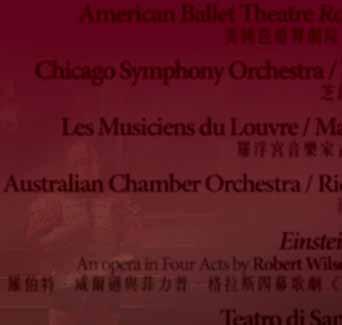








德布西:G小調弦樂四重奏,作品10
Claude Debussy: String Quartet in G minor, Op 10
雖然德布西晚年寫下一系列非常動人 的室樂作品,但他早期寫的弦樂四重 奏,也是他唯一的一部弦樂四重奏,
卻展示了年輕的德布西如何憑藉傳統 發揮嶄新的精神。這部四重奏 1893 年於巴黎首演,他彷彿要向一眾德國
大師留下來的傳統表示:「這些東西 我也能做到,不過我要用自己的方法 做。」 G 小調弦樂四重奏是德布西唯
一一部附有傳統作品編號的作品。
年輕的德布西在巴黎過着波希米亞式
的生活,到處都是新思想,他常與畫
家、詩人、音樂家分享各自的看法。
他對創作這種極受尊重的傳統古典音 樂很有把握,還加入了獨特的個人風
格,這些特色後來還成為了他的標 誌,如嶄新又微妙的和聲變化、生動 仔細的節奏形態,以及不把織體單單
視為一種手法,反而把它視之為作品 主要內容的設計。
這部弦樂四重奏按照傳統由四個樂章 組成,全都環繞着一個十分容易辨 認的主題,以不同的化身連接整套樂
曲。德布西在開端的幾個小節已經 把這個不安的主題展露出來,這種反 覆出現的「連章式」動機是德法兩國
音樂家率先使用的技巧,對十九世紀 末的聽眾來說早已十分熟悉。另一方 面,豐富的織體充滿美感,節奏又能
表現本樂章的音樂內容,這些特點都
Late in his career, Claude Debussy wrote a series of hauntingly beautiful chamber pieces, but the early String Quartet — the only work he completed in this genre — is a fascinating example of a young composer approaching inherited traditions with a fresh new spirit. This composition, which was premiered in Paris in 1893, looks squarely at the noble tradition inherited from the German masters as if to say, “I can do this too, but in my way.” The Quartet is the only work to which Debussy assigned the “oldfashioned” designation of an opus number.
New ways of thinking were part of the air Debussy breathed as a young Bohemian in Paris, inspired by the ideas he shared with fellow painters, poets and musicians. While working confidently within one of the most respected genres of the classical tradition, Debussy already reveals a number of the unique stylistic traits that would later become his musical signature: unconventional, subtle transformations of harmony, a vivid rhythmic sensibility, and an approach that treats musical textures as an essential part of a composition’s content rather than merely as its surface.
The Quartet is conventionally divided into four movements but revolves around a single thematic idea which returns in different guises to unify the entire structure. Debussy introduces this easily recognisable, restless motif within the opening measures. His use of a recurrent “cyclic” motif had
成為了這部弦樂四重奏教人驚喜的新 穎之處。
第二樂章像一首諧謔曲,承接着第一 樂章的探索精神。撥弦的聲音與(負 責演「連章」主題的)中提琴響亮的 跳動產生強烈對比,輕柔的節奏變化 則為聽眾帶來驚喜。德布西的傳記作 者指出,德布西對1889年在巴黎世博 會聽到爪哇加美蘭的聲音留下深刻的 印象,不少評論家都認為他嘗試在這 個樂章利用弦樂四重奏再現爪哇加美 蘭那複雜的層次感。
隨着兩個變化多端的樂章,接着響起 的是隱約發散着美感的〈小行板〉。
在這個樂章,中提琴再次突破傳統, 擔起重任。音樂的和聲既豐富又帶點 復古味道,使用了大小調二分前的早 期調式。這種難以捉摸的聲音使人想 起作曲家後來的歌劇《佩利亞與梅麗 桑德》。終章回復第一、二樂章的動 感(還直接引用了當中的元素),而 核心動機經過一番修飾再次登場。最 後音樂突然興奮地走到終結,把一路 上所有徘徊不定的幻想一掃而空。
been pioneered by both German and French composers and was familiar enough to audiences of the late 19th century. At the same time, the Quartet’s astonishing novelty emerges in Debussy’s use of rich, sensuous textures and rhythmic shapes to design the actual musical conversation in this movement.
The scherzo-like second movement continues in this spirit of exploration. The sonority of plucked strings is contrasted with the throbbing eloquence of the viola (which is based on the “cyclic” theme), while supple rhythmic alterations bring delightful new surprises. Debussy’s biographers point to the lasting impression made when Debussy encountered the sound of the Javanese gamelan at the Paris Exposition in 1889, and many commentators hear in this movement an attempt to recapture the gamelan’s complex interplay of layers in the format of a string quartet.
Following the restlessness of the first two movements comes an Andantino of veiled beauty. Here, too, notice how the viola acquires unusual prominence. Debussy’s harmonies are both succulent and somehow archaic in character, making reference to earlier modes before the binary division into major or minor. In some ways, the elusiveness of this sound world resembles that of his opera Pelléas et Mélisande , to whose composition he would soon turn. The final movement resumes the driving energy of the earlier movements (which are directly cited), while the central motif reappears in new disguises. With the suddenly excited rush of the coda, Debussy’s music shakes off any lingering fantasies encountered along the way.
舒伯特:C大調弦樂五重奏,D 956
Franz Schubert: String Quintet in C, D 956
這部大提琴五重奏寫於舒伯特人生的 最後一個夏天,那時他的產量十分驚 人。這部作品很容易令人想到是他絕
筆的告別之作,可是舒伯特其實早已 被梅毒困擾多年,相信不可能預計自 己的健康會突然下滑,甚至會在11 月
離世。作品包含了他晚年在音樂探索 上的重要元素,包括 C 大調「偉大」 交響曲和最後幾部鋼琴奏鳴曲的史詩
氣質、與摯友一同創作音樂的親密關 係、隨意的感覺和邁向浪漫時期的和 聲實驗。
音樂開始時聽起來像個慢板的引子, 但其實已經踏入第一樂章〈快板〉。
舒伯特從開端拘束的靜態氣氛巧妙地
寫出緊張的情緒,在戲劇性的第一主 題響起後,由兩部大提琴奏出的第二 主題發出動人的光芒。這個樂章的 長度比其他樂章長得多,可見他的雄 心壯志,當中表現了不同的情緒,有 非常急速的段落,也有從容不迫的片 段,像一位好奇的旅客探索新事物一 樣。結束時把開端的靜止和極具戲劇 性的主題結合起來。在整個樂章裏, C大調熟悉的聲音滲透出不尋常的濃厚 氣氛︰音樂彌漫着一種含糊的情緒,
與 C 大調一般產生的直接光輝截然不 同。
〈慢板〉同樣是比較大型的。當中的 主旋律是舒伯特最令人陶醉的傑作
Schubert composed the String Quintet in C during his final summer as part of an incredible outpouring of creativity. It’s difficult to resist associating this music with “swan song” gestures of farewell, but we should remember that Schubert had already been suffering for years from the effects of syphilis and could not have predicted the sudden decline in health that led to his early death in November 1828. The Quintet draws together the most significant aspects of the composer’s musical explorations from his last few years: the epic scope of the “Great” C Major Symphony and the final piano sonatas, the intimacy of music-making among friends, and the sense of spontaneity as well as harmonic experimentation that looks ahead to the romantic age.
The opening music only sounds like a slow introduction but is already part of the first movement Allegro. From the uneasy stasis of the beginning, Schubert’s clever scoring generates tension. The dramatic first theme is followed by a second theme of radiant loveliness introduced by the two duetting cellos. This ambitiously proportioned movement covers a wide emotional range, alternating between passages of desperate urgency and unhurried leisure that brings to mind a curious traveller exploring a new landscape. The coda recombines the static opening with the dramatically driven main theme. Overall, the familiar tonality of C major is imbued with an unusually rich
之一,在第一小提琴和第二大提琴夢 幻似的伴奏下,音樂的氣氛變得像夜 曲般。中段出現激烈的變化,音樂變 得激動、痛苦,舒伯特把調性移高半 度,並走進小調,由 E 大調到 F 小調。
最後音樂回到起初平靜的主題,但仍 有一點點的不安夾雜於其中。
第三樂章的〈諧謔曲〉充滿對比。樂 曲速度極高,很有幹勁。樂曲的主要 部分為行板三重奏,音樂在這裏放慢 步伐,由三拍變成兩拍,有些評論家 認為這裏暗示着喪禮進行曲,也是這 部五重奏另一個含糊不清的地方。像 〈慢板〉洶湧的中段一樣,音樂的調 性再次升高半度,由C 調走到降D 調。
終章是奏鳴迴旋曲,由一段激動的小 調段落展開,教人意外,後來才走到 大調。第二主題嘗試帶出一點歡樂, 但音樂還是繞到憂鬱的氣氛來。結束 前速度增加,舒伯特要樂手把之前所 有曖昧之處統統驅走,還用上一個令 人詫異的刺耳和聲,最後才讓各樂器 奏出同音C,為樂曲劃上句號。
樂曲介紹︰湯馬士‧梅 中譯︰張婉麗
ambience: instead of the straightforward brightness typically associated with this key, a deeper emotional ambiguity prevails
The Adagio is written on a similarly big scale. The principal melody, one of Schubert’s most ravishing creations, is given a magical accompaniment by first violin and second cello to create a nocturne-like atmosphere. A violent mood swing leads to the passionate, wrenching middle section, in which Schubert shifts the key up a half-step and into the minor, from E major to F minor. When it returns, the serene opening theme also absorbs something of the intervening restlessness.
The Scherzo abounds in contrasts. Extremely fast and aggressive in its pulse, the main section slows and veers from triple to duple meter for an andante trio in which some commentators discern hints of a funeral march — another aspect of the Quintet’s extraordinary ambiguity. Just like the Adagio’s turbulent middle section, the key here is likewise pushed up a halfstep from C to D-flat. The earthy, dancelike main theme of the sonata-rondo finale is given an unexpectedly agitated minor cast before settling into the major. A second theme makes another attempt at cheerfulness, but the music proceeds to take melancholy detours. Near the end, the tempo accelerates as Schubert rallies all his players in an effort to dispel these pervading emotional ambiguities — and adds a jarring harmonic surprise just before they agree on a single, unison C to conclude the Quintet.
Programme notes by Thomas May
石坂團十郎
Danjulo Ishizaka Cello Recital with Kiyondo Ishizaka, Piano
26.2.2012
舒曼 Robert Schumann (1810-1856)
A小調大提琴與鋼琴幻想曲,作品73
Fantasiestücke in A minor for Cello and Piano, Op 73
柔和且富有表情的 Zart und mit Ausdruck
活潑輕快 Lebhaft, leicht
明快、熱情 Rasch und mit Feuer
高大宜 Zoltán Kodály (1882-1967)
B小調無伴奏大提琴獨奏奏鳴曲,作品8
Sonata in B minor for Solo Cello, Op 8
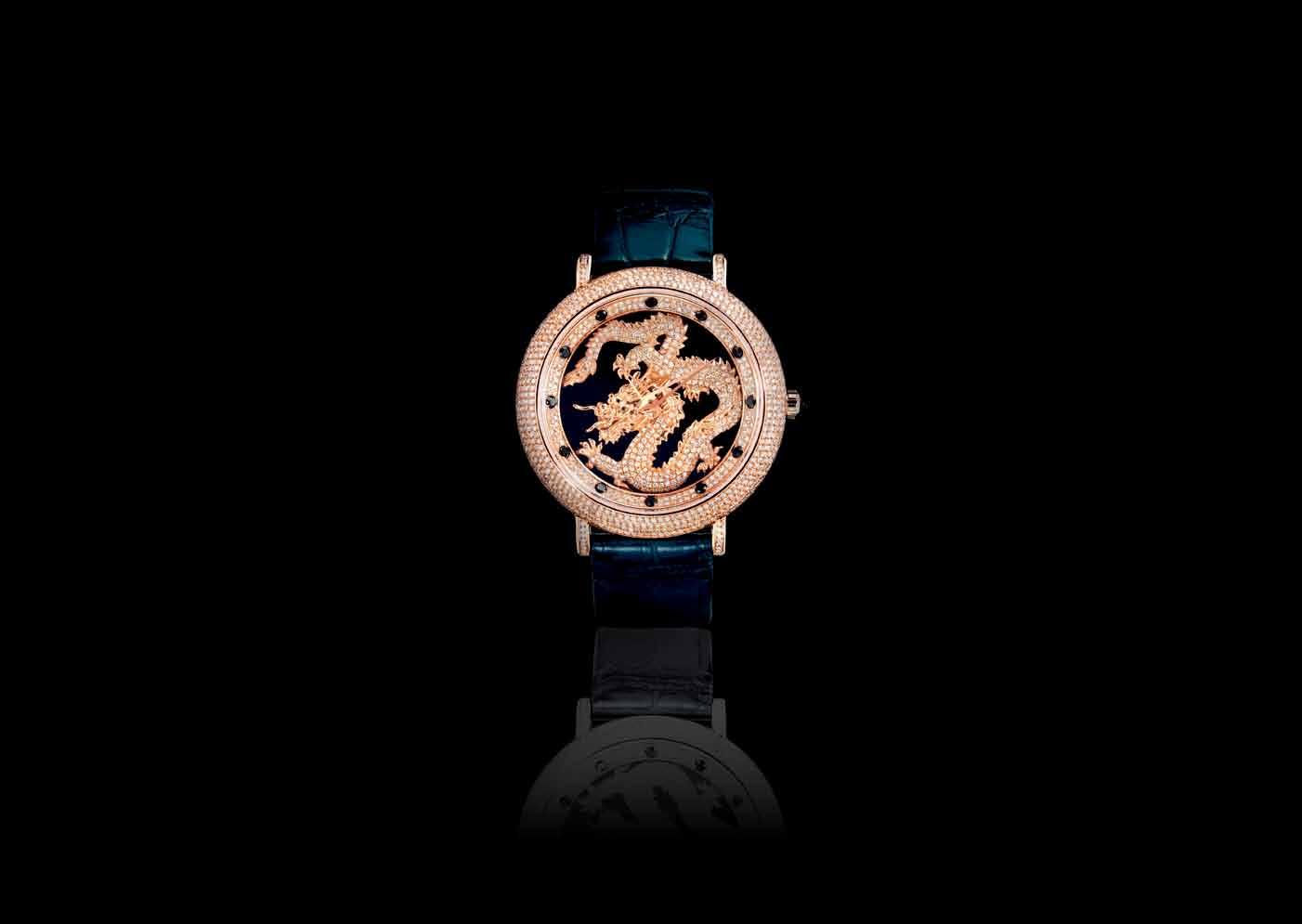
激昂且熱情的快板 Allegro maestoso ma appassionato
慢板 Adagio
非常活潑的快板 Allegro molto vivace
中場休息 Interval
貝多芬 Ludwig van Beethoven (1770-1727)
C大調第四大提琴與鋼琴奏鳴曲,作品102,第一首
Sonata No 4 in C for Cello and Piano, Op 102 No 1
溫柔的行板 Andante teneramente
活潑的快板 Allegro vivace
慢板 Adagio
活潑的快板 Allegro vivace
布拉姆斯 Johannes Brahms (1833-1897)
F大調第二大提琴與鋼琴奏鳴曲,作品99
Sonata No 2 in F for Cello and Piano, Op 99
活潑的快板 Allegro vivace
深情的慢板 Adagio affettuoso
激情的快板 Allegro passionato
極快板 Allegro molto
演出長約1小時40分鐘,包括一節中場休息
Running time: approximately 1 hour and 40 minutes with one interval

